Keeping chameleons in captivity can be a challenge. These delicate lizards have very specific care requirements and need their wild habitats to be replicated as closely as possible in order to thrive as pets. Dusting their feeder insects properly is a key to keeping chameleons successfully.
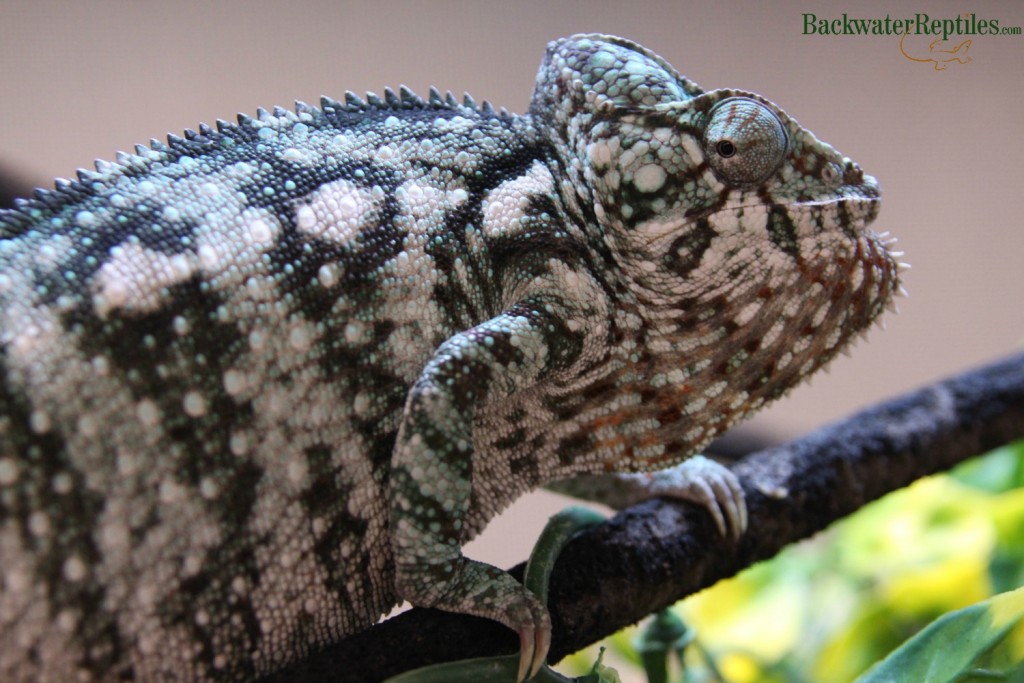
Besides requiring a mesh enclosure or cage, a dripping and misting system to meet humidity requirements, and UV lights and heat, chameleons also require their invertebrate meals to be extremely nutritious. This means that you can’t just feed your pet chameleon any old feeder insects. You will need to make sure your chameleon’s insects are gut-loaded and vitamin dusted regularly.
So what is vitamin dusting? What vitamin dusts do you give a chameleon and how often do you need to do so? How do you go about dusting the insects? These are all questions we will address in this blog article, so read on if you want to make sure your chameleon stays healthy and strong.
What is vitamin dusting?
The answer to this question is actually very simple.
Vitamin dusting is where you coat your feeder insects in a film of powdered vitamin supplements before feeding time.
Do you take a multivitamin pill daily? How about a vitamin C tablet every now and then? Well, dusting your chameleon’s feeder insects is basically the same concept. The only difference is that because it would stress the animal to try to get it to ingest a vitamin pill, reptile hobbyists have invented a clever way to get the animals their vitamins. By coating the insects, the chameleons don’t even notice they’re eating the vitamins they need.
What types of vitamin dusts are good for chameleons? How often do you need to dust your feeder insects for your pet chameleon?
These are questions we get a lot at Backwater Reptiles. This is because there’s no manual on how frequently dusting needs to be done and the frequency as well as type of vitamin dusts required can vary from species to species.
At Backwater Reptiles, we use five main vitamin dusts for our chameleons – bee pollen, spirulina, a calcium + D3 supplement, a calcium supplement, and Herptivite/Supervite supplement.
The general rule of thumb with baby chameleons is to dust pinhead crickets (or whatever food source you give them) fairly frequently with calcium. Babies are growing fast and their little bodies need lots of nutrients to make sure their growth process happens smoothly.
Listed below are the vitamins used at Backwater Reptiles and the schedule we subscribe to when it comes to dusting feeder insects for our chameleons.
Bee pollen
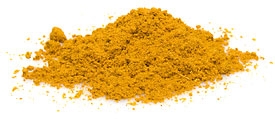
In the wild, chameleons eat insects that could have recently pollinated a flower. Supplementing with bee pollen is said to help avoid chameleon “hunger strikes.”
Frequency:
Babies: once monthly
Sub-adults: twice monthly
Adults: twice monthly
LoD (calcium + D3)
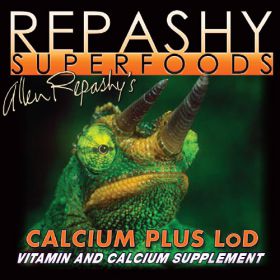
At Backwater Reptiles, the type of LoD vitamin supplement we use is called “Repashy Superfoods Calcium plus LoD.”
Frequency:
Babies: once monthly
Sub-adults: twice monthly
Adults: twice monthly
NoD (calcium)
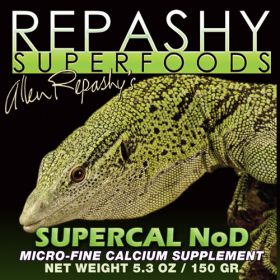
The kind of calcium supplement used at Backwater Reptiles is called “Repashy Superfoods Supercal NoD.”
Frequency:
Babies: 10-15 times monthly
Sub-adults: 5-7 times monthly
Adults: 2-3 times monthly
Spirulina

Spirulina is an algae that commonly grows in freshwater ponds and lakes. The kind fed to our chameleons is dried and powdered. Any powdered spirulina will be fine for your chameleons, but we use an organic, non-irradiated, and non-GMO spirulina from www.nuts.com.
Frequency:
Babies: once monthly
Sub-adults: twice monthly
Adults: twice monthly
Herptivite/Supervite
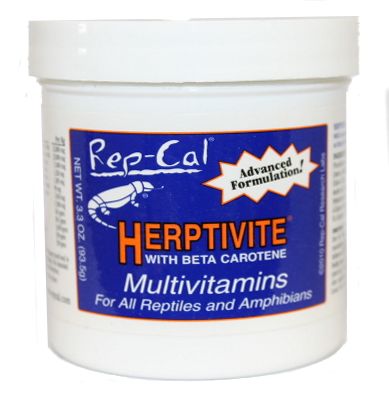
These are general vitamin supplements or multivitamins. The kind we use at Backwater Reptiles is “RepCal Hertivite with Beta Carotene Multivitamins.”
Frequency:
Babies: twice monthly
Sub-adults: twice monthly
Adults: once monthly
How do you dust your feeder insects?
The good news is that the physical process of dusting your feeder insects with vitamins is not as tedious as it sounds.
All you will need to complete the process is a small plastic bag, your vitamin of choice, and your feeder insects.
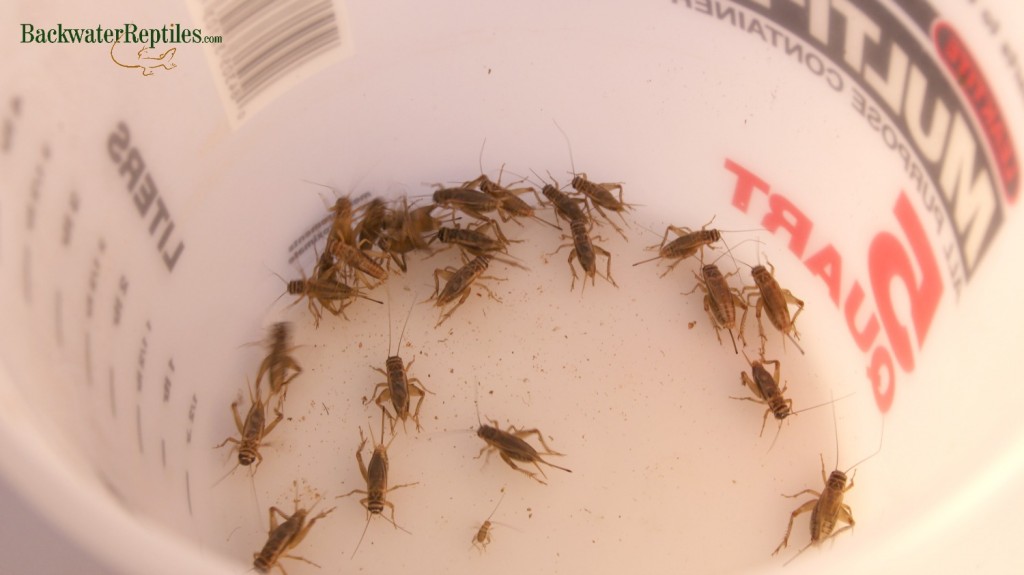
Just put your insects in the plastic bag along with your vitamins and seal the bag shut. Then shake the insects around in the bag with the dust for a few seconds until you can see that they are visibly coated with the dust.
Now your feeder insects are ready to be eaten!
A quick tip – if you are feeding your chameleon dusted crickets, be sure to feed them to the animal quickly after the dusting process has been completed. Crickets have good hygiene and will clean themselves of the dust as quickly as they can, so the sooner they are eaten, the more vitamins the chameleon will ingest.
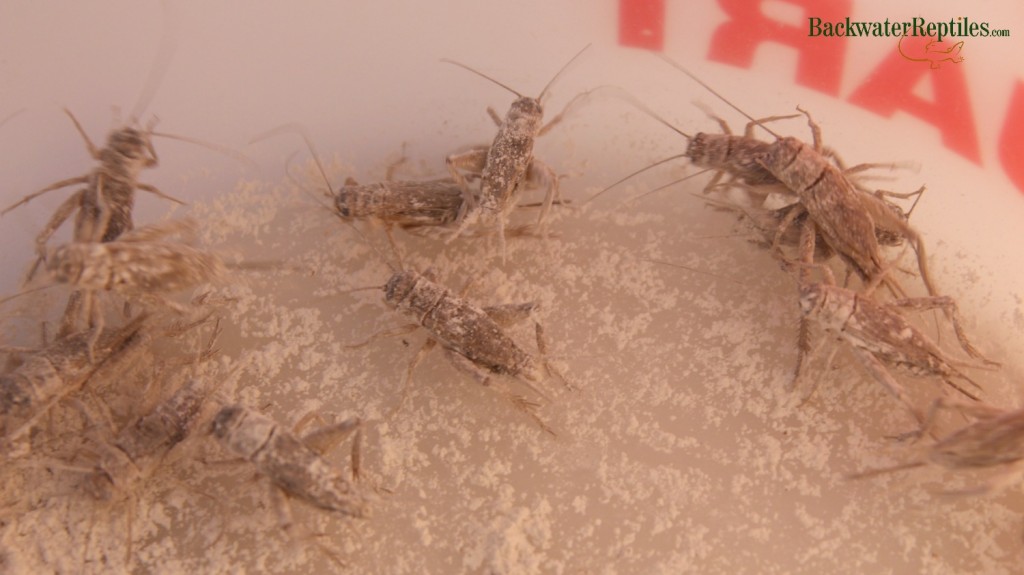
How to dust chameleon feeder insects – Conclusion
A healthy, happy chameleon will require supplemental vitamins in its diet. This can be achieved by dusting your pet chameleon’s feeder insects with a number of multivitamins.
